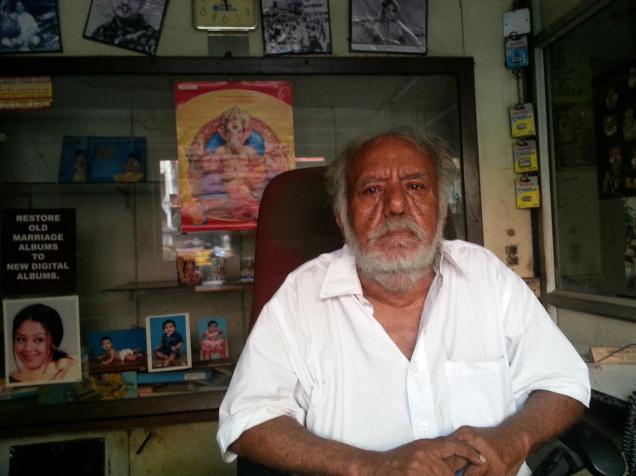
Today, everybody is a photographer, and everybody owns a camera. If you go to a function, there are so many cameras
C.S.Balachandra Raju’s ‘Sathyam studio’ in Mylapore is like a curiosity shop. Young Cho Ramaswamy and Hema Malini smile from photographs taken decades ago; cameras that the 75-year-old used as a young boy line the back-room; and he still has a copy of the letter-head from 1940’s, bearing the street name ‘Brodies Road’, long before it became R.K.Mutt Road. “The photo studio was started by my father. It moved to this location — from North Mada street — in the 40’s, and I took over in 1961. Back then, portraits were very popular; judges, cine actors, doctors — all of them came. But now, everybody walks in for passport photos.”
Mylapore, in the 60’s, was filled with coconut trees. “There were trams that came to Luz Corner; I used to board one to go to Santhome, the fare was just six paise! And long before Mada streets became crowded, there was a provision for fire-engines to fill water from the temple tank.” In that black-and-white era of photography, Raju recalls taking pictures of women who came to the studio with flowers stitched into their plaits; infants were carried-in by their parents, to have their first portraits shot, with their hands and knees on a table. “And even now, people come and say they want photographs of their child in the same way.” The only difference is, it used to take two days then, to develop the negatives, and cost a mere Rs.3 for set of passport prints…
The cameras back then were heavy; Raju and his son Anand show me their old ones, imported from Germany. “You had to specially eat just to carry that one around,” Raju laughs, pointing to a square, handmade wooden camera, over a foot wide. Photography then, was truly an art, and the photographer’s skill and judgement produced good images.
Raju then moves on to the present. “This property belongs to the temple,” he says, pointing to the Kapaleeshwara temple gopuram diagonally across. “But the rents have increased sharply, it is getting unaffordable”. Besides, competition is very stiff, he says. “Today, everybody is a photographer, and everybody owns a camera. If you go to a function, there are so many cameras. See, you’re also taking pictures with your cell-phone!” and I smile as I shoot his pictures.
Our leisurely conversation is interrupted, when a man walks in and asks if he can get some papers photocopied; Raju’s son directs the man to the right shop. “My son is now the backbone of the shop, he is my successor,” Raju says, adding that the future, as he sees it, is digital. “We have to change with times,” he says pragmatically. As if to underline that, a signboard behind him offers to “restore old marriage albums to new digital albums”. Raju has also moved out of Mylapore, and now lives in OMR, but he misses the traditional neighbourhood. We’re interrupted yet again; this time, it is two boys whose cricket ball has fallen into the compound. “They live next door; earlier, their parents played cricket and came looking for balls; now it is their turn. We would like to continue our business here for longer, but for that, Kapaleeshwara must help”.
(A weekly column on men and women who make Chennai what it is)
source: http://www.thehindu.com / The Hindu / Home> Features> MetroPlus> Society / by Aparna Karthikeyan / June 09th, 2013